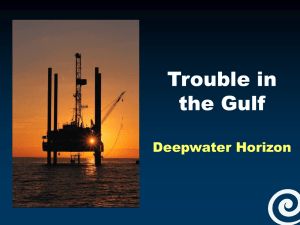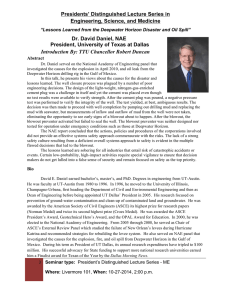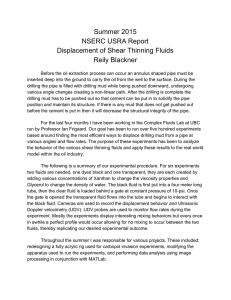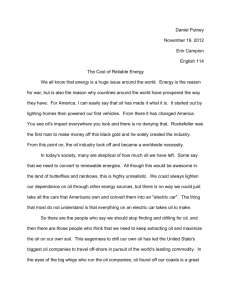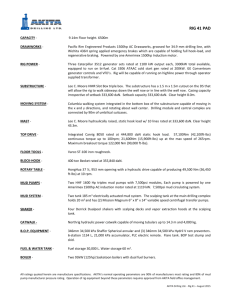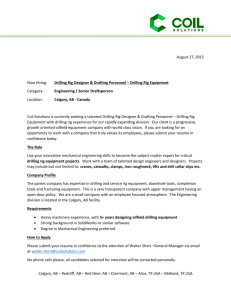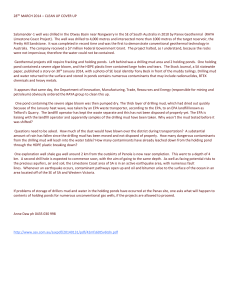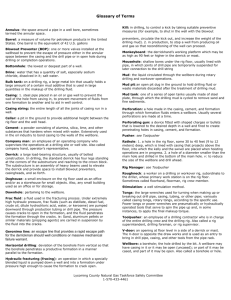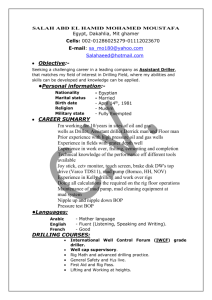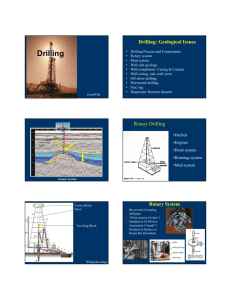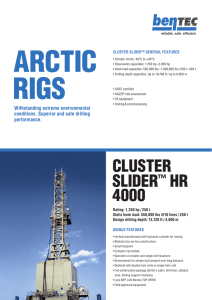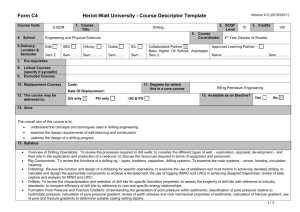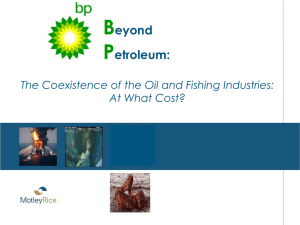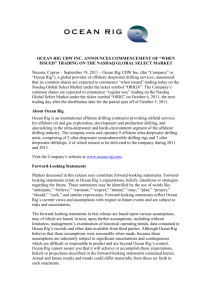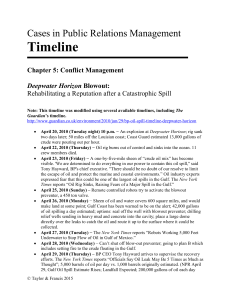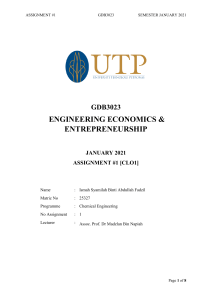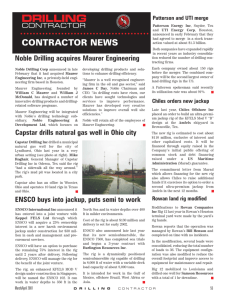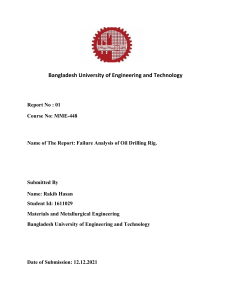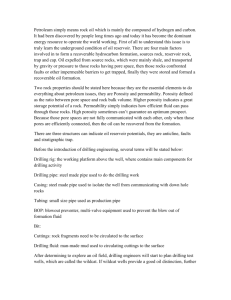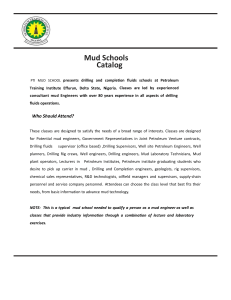A semi-submersible platform is partially filled with water for stability
advertisement
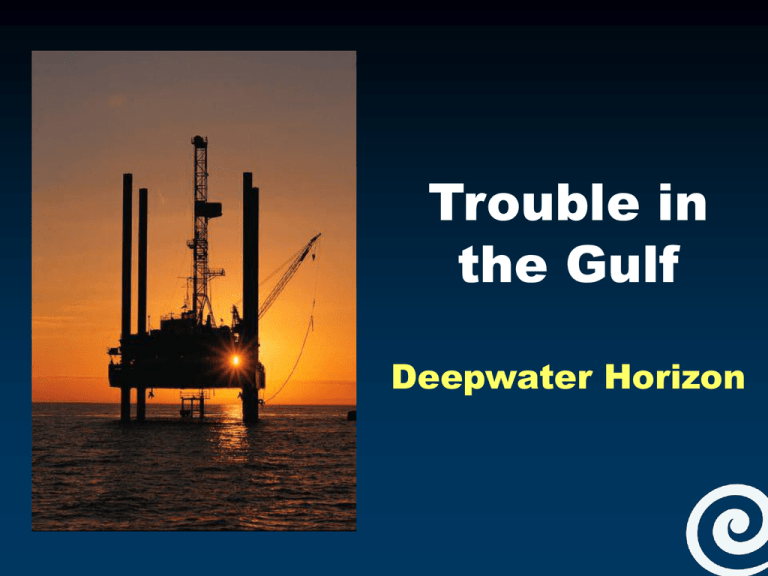
Trouble in the Gulf Deepwater Horizon Different platforms are used depending on the depth of the water at the drill site. Deepwater Horizon was a semi-submersible oil rig. A semi-submersible platform is partially filled with water for stability. Zooming in… Gulf of Mexico: The light blue is shallow water near land. The darker blue is deeper water. What happened? Exploratory work had been completed and the well was being prepped for Deepwater Horizon to move to another location. A different rig would be used to pump the oil they had found. The reservoir was estimated to contain 15 billion gallons of oil. Step-by-Step The following slides will show a cross section of the drilling pipe. The illustration is NOT to scale. Different colors represent the thick drilling fluid known as “mud,” the cement used to temporarily shutdown the well, and the gas that made its way to the surface. Heavy drilling fluid, “mud,” was used during exploratory drilling operations to keep any natural gas from rising up the pipe. As they prepared to leave the site, cement was pumped into the well to seal it until the next rig came to remove the oil. Because the cement is heavier than the mud, it sinks to the bottom of the well. As one of the final steps to prep the pipe, the heavy mud was removed and replaced with much lighter seawater. The gas easily moved through the seawater and up the pipe to the surface where it caught fire. This is commonly known as a “blowout.” Blowouts rarely happen. Both of the emergency devices meant to prevent such an accident failed: Blowout preventer Sheer rams On Tuesday, April 20, 2010 an explosion rocked the oil drilling platform. After burning for 36 hours, the rig sank on April 22, 2010 Oil flows into the Gulf Remotely operated vehicles (ROVs) were used to attempt to close the blowout preventer valve which would have stopped the oil flow. They were unsuccessful. Another attempt to stop the flow The initial collar and cap didn’t work because of the force of the oil flowing from the blowout preventer. In this drawing you get a sense of the size of the blowout preventer. A man is standing on the left for scale. An estimated 184 million gallons of oil flowed into the Gulf before they were able to cap the well. On July 15, a 75-ton cap stopped the oil flow Animation of surface oil ~ satellite data Real-Time Ocean Forecast from NOAA Heavy drilling fluid (mud) and cement will permanently cap the well. This is commonly known as “bottom kill.” Notice how the plug will be set far below the sea floor and wellhead. NOAA quick to respond National Oceanic and Atmospheric Administration
